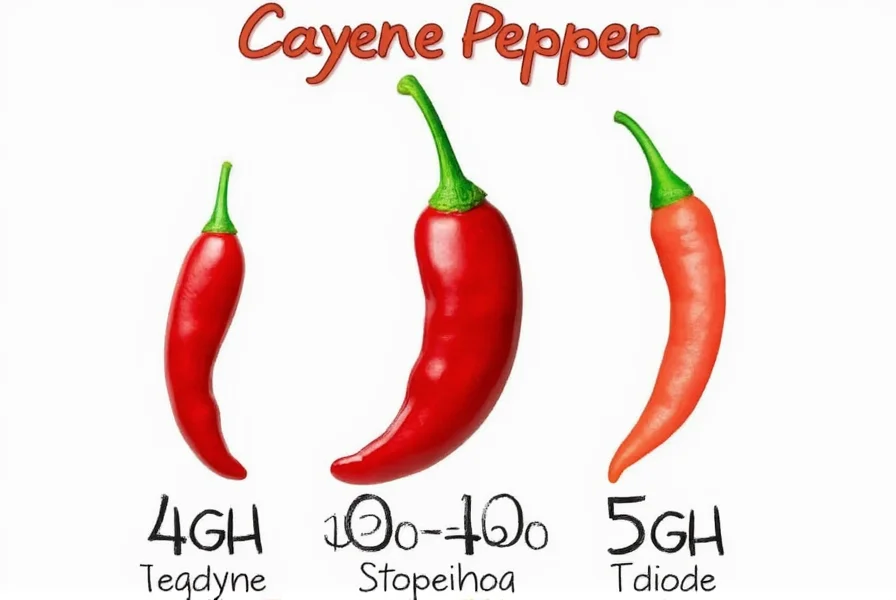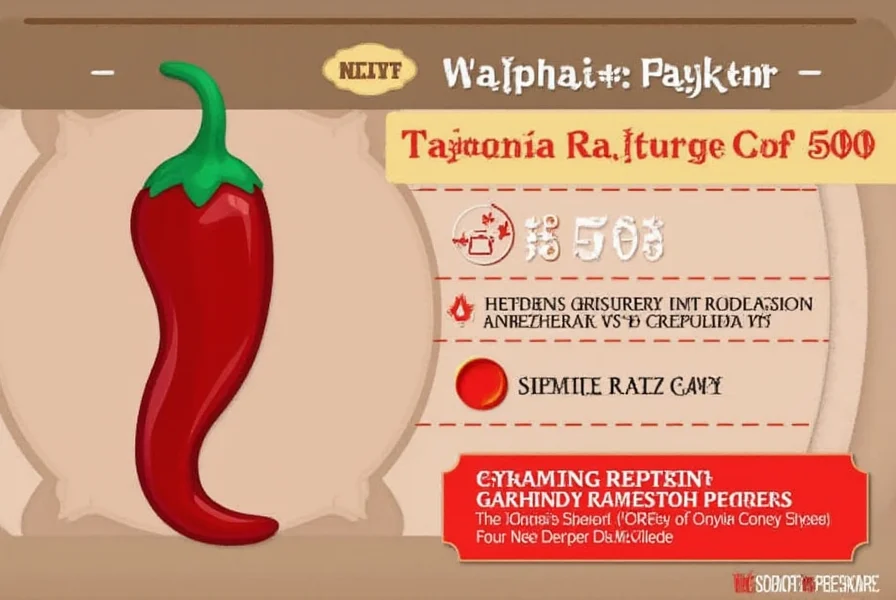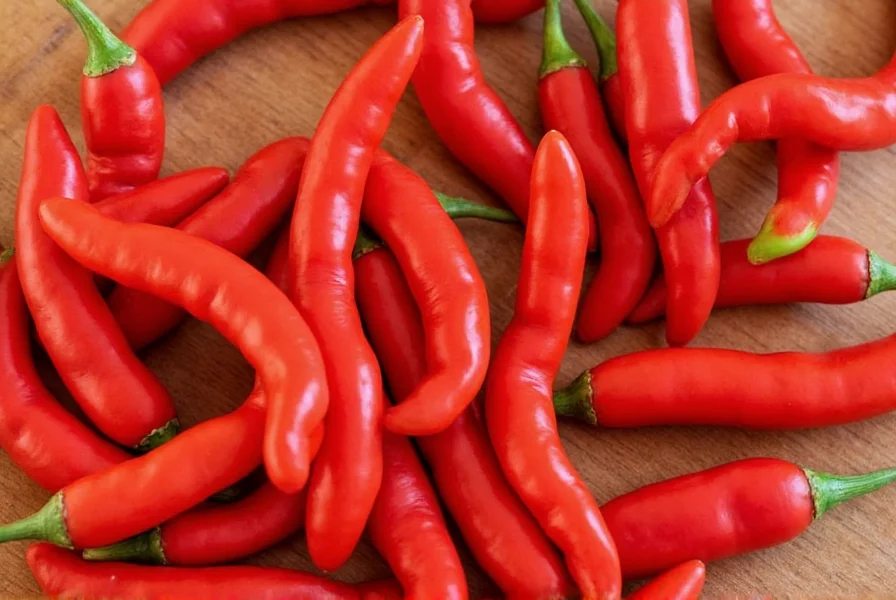Understanding cayenne pepper's position on the Scoville scale provides valuable context for culinary applications and personal consumption. Developed by pharmacist Wilbur Scoville in 1912, the Scoville scale measures the concentration of capsaicinoids—the compounds responsible for a pepper's heat—in Scoville Heat Units. The scale ranges from zero (bell peppers) to over 2 million SHU (Carolina Reaper).
Where Cayenne Pepper Falls on the Scoville Scale
Cayenne's 30,000-50,000 SHU rating makes it significantly hotter than many common peppers but milder than extreme varieties. This measurement represents the concentration of capsaicin, the active component that triggers heat receptors in your mouth. The exact position within this range depends on growing conditions, specific variety, and even the individual pepper's maturity.
| Pepper Variety | Scoville Heat Units (SHU) | Heat Level Comparison |
|---|---|---|
| Bell Pepper | 0 SHU | Mild |
| Jalapeño | 2,500-8,000 SHU | Mild to Medium |
| Serrano | 10,000-23,000 SHU | Medium |
| Cayenne | 30,000-50,000 SHU | Medium-Hot |
| Habanero | 100,000-350,000 SHU | Very Hot |
| Ghost Pepper | 855,000-1,041,427 SHU | Extremely Hot |
Factors That Influence Cayenne's Heat Level
Several variables affect where a specific cayenne pepper falls within the 30,000-50,000 SHU range:
- Growing conditions: Temperature, soil quality, and water stress can increase capsaicin production
- Pepper maturity: Fully ripe red cayenne peppers typically register higher on the Scoville scale than younger green varieties
- Specific cultivar: Different cayenne varieties exist with varying heat profiles
- Plant position: Peppers growing on the upper parts of the plant often develop more heat
These natural variations explain why two cayenne peppers from the same batch might deliver noticeably different heat experiences.

Practical Implications of Cayenne's Heat Level
Understanding cayenne pepper's scoville heat units helps in several practical scenarios:
For cooking applications, cayenne's medium-hot rating makes it versatile for adding noticeable heat without overwhelming other flavors. It works well in sauces, rubs, and spice blends where a consistent kick is desired. When substituting cayenne for milder peppers like jalapeños (2,500-8,000 SHU), use approximately 1/4 to 1/2 teaspoon of cayenne powder for every fresh jalapeño to achieve comparable heat.
Handling precautions become important given cayenne's significant heat level. Always wear gloves when processing large quantities, and avoid touching your face. The capsaicin in cayenne can remain active on surfaces for extended periods.
For those exploring potential health benefits, cayenne's capsaicin content at 30,000-50,000 SHU may contribute to temporary metabolic boosts and pain relief when used appropriately. However, individual tolerance varies significantly.
Comparing Cayenne to Other Popular Peppers
When evaluating cayenne pepper scoville units against common alternatives:
- Cayenne is approximately 4-20 times hotter than jalapeños
- It's about 1.5-5 times hotter than serrano peppers
- Cayenne measures roughly 1/3 to 1/2 the heat of a habanero
- It's significantly milder than extreme peppers like the ghost pepper (15-30x less hot)
This comparative understanding helps cooks make informed substitutions based on desired heat levels. For example, if a recipe calls for cayenne but you prefer milder heat, consider using paprika (500-1,000 SHU) instead.

Safety Considerations with Cayenne's Heat Level
While cayenne pepper's scoville rating of 30,000-50,000 SHU isn't extreme, it can still cause discomfort if mishandled:
- Always wash hands thoroughly after handling cayenne peppers or powder
- Use dairy products (milk, yogurt) rather than water to alleviate mouth burn
- Start with small amounts when cooking—heat intensity builds over time
- Be cautious when using in enclosed spaces as airborne capsaicin can irritate eyes and lungs
Individual tolerance to capsaicin varies widely, so what seems moderately hot to one person might be uncomfortably spicy to another. This variability explains why some people enjoy cayenne in generous amounts while others experience significant discomfort from small quantities.
Common Questions About Cayenne Pepper Heat
What is the exact Scoville rating for cayenne pepper?
Cayenne pepper typically measures between 30,000 and 50,000 Scoville Heat Units (SHU). The exact rating varies based on growing conditions, specific variety, and maturity. This places cayenne firmly in the medium-to-hot category of the Scoville scale.
How does cayenne pepper compare to jalapeño on the Scoville scale?
Cayenne pepper (30,000-50,000 SHU) is significantly hotter than jalapeño peppers (2,500-8,000 SHU). On average, cayenne measures about 6-12 times hotter than a typical jalapeño. This means you'd need substantially less cayenne than jalapeño to achieve similar heat levels in recipes.
Does the form of cayenne affect its Scoville rating?
The Scoville rating refers to the capsaicin concentration, which remains consistent whether cayenne is fresh, dried, or ground into powder. However, dried cayenne powder often seems hotter because it's more concentrated—removing water increases the capsaicin density per volume. One teaspoon of cayenne powder typically equals 3-4 fresh cayenne peppers in heat intensity.
Can cayenne pepper's heat level vary within the same plant?
Yes, significant variation can occur even among peppers from the same plant. Factors like sun exposure, position on the plant (upper peppers often hotter), and exact harvest time affect capsaicin production. This natural variation explains why two cayenne peppers from the same batch might deliver noticeably different heat experiences despite sharing the same 30,000-50,000 SHU range.
Why does cayenne pepper's Scoville range seem so broad?
The 30,000-50,000 SHU range reflects natural biological variation in capsaicin production. Environmental factors like soil composition, temperature fluctuations, water stress, and sunlight exposure all influence heat development. Additionally, different cayenne cultivars exist with genetically determined heat potentials. This variability is why precise heat measurement requires laboratory testing of individual peppers.











 浙公网安备
33010002000092号
浙公网安备
33010002000092号 浙B2-20120091-4
浙B2-20120091-4